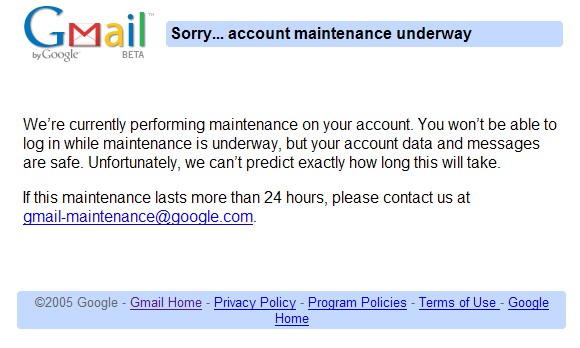I hear a lot of opposition to software as a service from customers, ranging from an unformed mistrust of anything that crosses the firewall, to the feeling that anything that runs in a browser must be a toy, to a full-blown (and justified) concern of non-American companies about having their data stored on US-based servers where it is presumably accessible to US government agencies on demand. Keeping in mind that many of them are large, fairly conservative financial services organizations, I obviously have a long way to go in terms of convincing them otherwise, yet I still try.
Going back to Tim O’Reilly’s original treatise on Web 2.0, SaaS is baked right into the definition in two important ways:
- the web as platform
- the end of the software release cycle
The first of these is likely what sells most people originally: the idea that nothing needs to be installed at your own site, and all you need to do is pay $x per month per user (where x is about the cost of a couple of cappuccini at Starbucks) to have access to a fully-functional application. Think that this is only for small businesses? Salesforce.com announced yesterday that Dell is increasing their number of Salesforce.com subscriptions from 15,000 to 40,000 users. There’s all sorts of good reasons why to do this — lower TCO, small ongoing expense versus a large capital expenditure, no need to bring a new servers and applications into your data centre — but the somewhat unspoken reason is that it’s a way for the business to escape the tyranny of IT when it comes to purchasing applications. I’ve seen many cases of a smallish business unit within a large organization wanting to bring in new technology (BPM, BPA and BI are all ones that I’ve seen in this scenario), but IT adds on an unduly large burden of corporate standards and application vetting that kills the ROI, and the business goes back to their paper and spreadsheets. I’m not saying that IT shouldn’t be involved in these decisions, but when their time spent reviewing and “architecting” a packaged solution costs as much as the external costs, something’s wrong. If the business can get equivalent functionality from a SaaS offering with much less IT involvement and a small monthly bill rather than a large up-front capital expenditure, that’s going to look much more attractive.
The second driver for SaaS from O’Reilly’s definition is where the benefits will really accrue in the future, although that’s likely unrecognized by many people. The idea that you don’t have massive software releases that take the system down for hours or days, but that new features are gradually introduced with little or no fanfare, means that there’s much less disruption to the users, and that they’ll be pleasantly surprised by new functionality. I had exactly this experience of pleasant surprise this morning, when I noticed that Google Reader, which I’ve been using for a couple of months now, has gone from listing the number of unread items as “100+” to the actual number, a feature that I sorely missed from Bloglines since I almost always have more than 100 unread items and I really want to know how many more. They didn’t, to my knowledge, disrupt service in order to add this new functionality: it just appeared in my browser this morning (or maybe before, I’m not all that observant sometimes). I believe that there’s still the need for some major upgrades, such as a complete UI paradigm shift, but most of the enhancements to most business applications could be done incrementally and introduced as they’re ready, if the infrastructure is there to support it. That requires a browser-based application to avoid a download and install each time something changes, if not actually SaaS, but it also requires a new mindset for development teams about agile development and release: something that is much more prevalent in the SaaS vendors than in corporate IT groups.
If you read my post on Enterprise 2.0 updates recently, or the original Dion Hinchcliffe post that inspired it, it starts to become clear that Enterprise 2.0 will be dependent to some degree on SaaS, at least in the short term: many IT organizations are just not ready to start installing this new breed of application on their own servers, and the business groups will look outside to get their problems solved. This will lead to a further commoditization of IT, since once the business is using SaaS successfully, that genie’s not going back into the bottle.
Update: Google Reader also added search capabilities in this set of incremental upgrades, which I didn’t even notice (as enamoured as a I was with the accurate unread item count) until I read it on Mashable.

